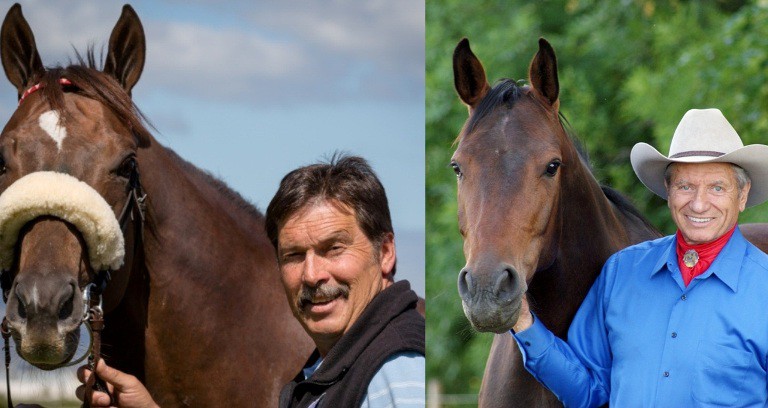‘HORSE Whispering’, a term generalised for working with problem horses, mainly due to the stunning success of American Monty Roberts, has grown rapidly in popularity around the world. ‘Join-Up’ refers to the amicable meeting of Man and Horse, with Horse submitting to Man, and is a massive business today for Roberts, its main proponent.
Roberts is a sought-after public speaker with his own radio show. He travels the world doing exhibitions. The Monty Roberts “Equine University” offers modules including “Be Like Monty”. He handles horses for high-profile clients including the Queen of England and on his website sells everything from Books to Calendars to Gift Cards.
In South Africa, Malan du Toit has been making a big name for himself too, with testimonials from top trainers on his own website. “Malan is a vital help in my stable,” says trainer Justin Snaith. “Malan is invaluable,” comments Geoff Woodruff. “He gets incredible results,” tells Louis Goosen and “It’s not a question of whether you can afford Malan du Toit, it’s whether you can afford to do without him,” attests Mike de Kock.
Du Toit prefers to call himself an ‘Equine Behaviour Therapist’ and says: “The blockbuster movie The Horse Whisperer romanticised talking into a horse’s ear as a way of calming the animal down and teaching him how to behave, but of course whispering has nothing at all to do with the actual process and is not a method used by anyone, ever, in the treatment of problem horses.
“There are some wily and unscrupulous marketers who have honed in on Monty Roberts’ success with their own brands of ‘Horse Whispering’. They use pre-trained Mustang horses from the American plains, pass them off as completely ‘wild’ and perform well-planned shows in front of crowds for big money. There are some very impressionable people among the horsey folk who believe this nonsense and throw money at it.
“The reality is that the treatment of problem horses is a slow and complicated process that takes knowledge, experience and horsemanship. There is no quick fix. It comes down to this, for Monty Roberts, myself and a handful of others who do the work in the correct way: Each of us acquired our knowledge and skills in different ways, over time. They market pre-defined packages. I prefer to tailor my therapy in terms of the individuality and past experience of every horse entrusted to me.
“On top of being a horseman extraordinaire, Roberts is also a great marketer and a showman. Some of my clients and associates have urged me to do the same, but I’m not sure I’d want to go that route. I retrieve much satisfaction from my individual successes especially when I get good feedback. People pay for my expert services and in return they get my personal and undivided attention.”
Monty Roberts’ Join-Up Method requires a problem horse to enter and run around a large, round paddock. Monty stands in the middle of the paddock and makes an impression on the horse via his body language, using little gestures. He gets the horse to change direction, to keep running and changing direction until it comes to a standstill. The calm horse then walks towards the middle and joins up, or ‘hooks up’ with Roberts, submitting himself to his new master.
Du Toit recalls: “I tried ‘joining up’ with my first ‘mad’ horse many years ago, but things didn’t work out all that well. Perhaps it was my own inexperience, or perhaps the horse could sense that I was uptight, but I just couldn’t get it right. I failed, so I started reading everything I could find on horsemanship and troublesome horses.
“What we’re doing today is not new at all. The treatment of problem horses, the concept of horse behaviour dates back millenniums to the Greek historian Xenophon whom some refer to as “the Forefather of Dressage’. Much later there was important academic work done by the likes of the Dorrance Brothers, John Lyons and Ray Hunt, and scientific experiments by the Australian Dr Andrew McLean and Dr Debbie Martin in the UK.
“I didn’t take anything for granted. I spent many years researching, reading and applying methods until I reached the point where I could offer my own Equine Behaviour Service to clients. I took an academic approach first and the pratical approach second and then combined the two. I tried to establish how horses think, what goes on in the brain of a horse.
“Horses are slow learners, but good learners. The key is to be the guide of the horse, going about it step-by-step and as slowly as possible, especially in the beginning. In essence it means that you have to create an environment where the horse has a feeling of safety and adrenaline levels are kept to a minimum. This can be very challenging to a horse in a domesticated environment. You have to become the one who controls his movements in the way you teach him to conform.
“The way to the feet of the horse is through the brain. If the horse does not understand, it will not respond accordingly. The typical troublesome horse is one who responds from a position of fear. At some point in his life he was scared or threatened, a bad experience that left a lasting response of fear. Those memories cannot be erased; they can however be masked or covered to help the horse to adapt in a domesticated environment.”
He says: “I use the principles of nature. In nature, the leader is the one who gets feet to move without moving feet itself. In a herd of animals, the leader makes others move without moving, and is in charge as a result.”
Du Toit’s work takes plenty of patience and repetition. A horse’s memories fade quickly. Much repetition is needed to teach new, acceptable behaviour. It can take several days, even weeks. If it sweats or plays up, it shows that it hasn’t yet accepted the new patterns and that means starting from scratch.
“It’s a process with steps, more than anything else,” Malan opines. “I do groundwork. I have a starting point, an objective and an end result. In between there are steps, as many steps as possible to get to the final result. The steps vary from horse to horse.”
Du Toit uses a halter in the paddock, and a schooling process which requires the application of the principles of operant and classical conditioning.
He says: “Horses learn primarily through trial and error (pressure and release) and by making very subtle associations between stimuli and the environment in which the learning takes place.” He ascribes his good success rate to the fact that he treats each horse as an individual. No single training method can be applied to every horse.
“Monty Roberts, for example, prefers to work mostly without a rope in his paddocks. He lets the horses run around him until they stop. It works for him. I prefer using the halter. That works for me. I believe that the more horses run, the more they will want to run.
“In the end it’s not a contest between horse therapists. We are there to provide a much-needed service. To my mind, more knowledge and experience will always make one handler better than another. In my view every horse takes time and effort, there is no quick-fire way of turning a troublesome horse into a well-mannered, submissive horse.”
From Xenophon, the Greek master, we learn, in an adapted translation from The Art Of Horsemanship: “The one best precept—the golden rule—in dealing with a horse is never to approach him angrily. Anger is so devoid of forethought that it will often drive a man to do things which in a calmer mood he would regret.”
Whether you’re in the Monty Camp or the Malan camp: Whatever you do, let them do it. Don’t attempt to control your problem horse yourself with a mix of anger and domination. Let the real experts take care of it, their way.
Monty Roberts website: www.montyroberts.com
Malan du Toit website: www.malandutoit.co.za

